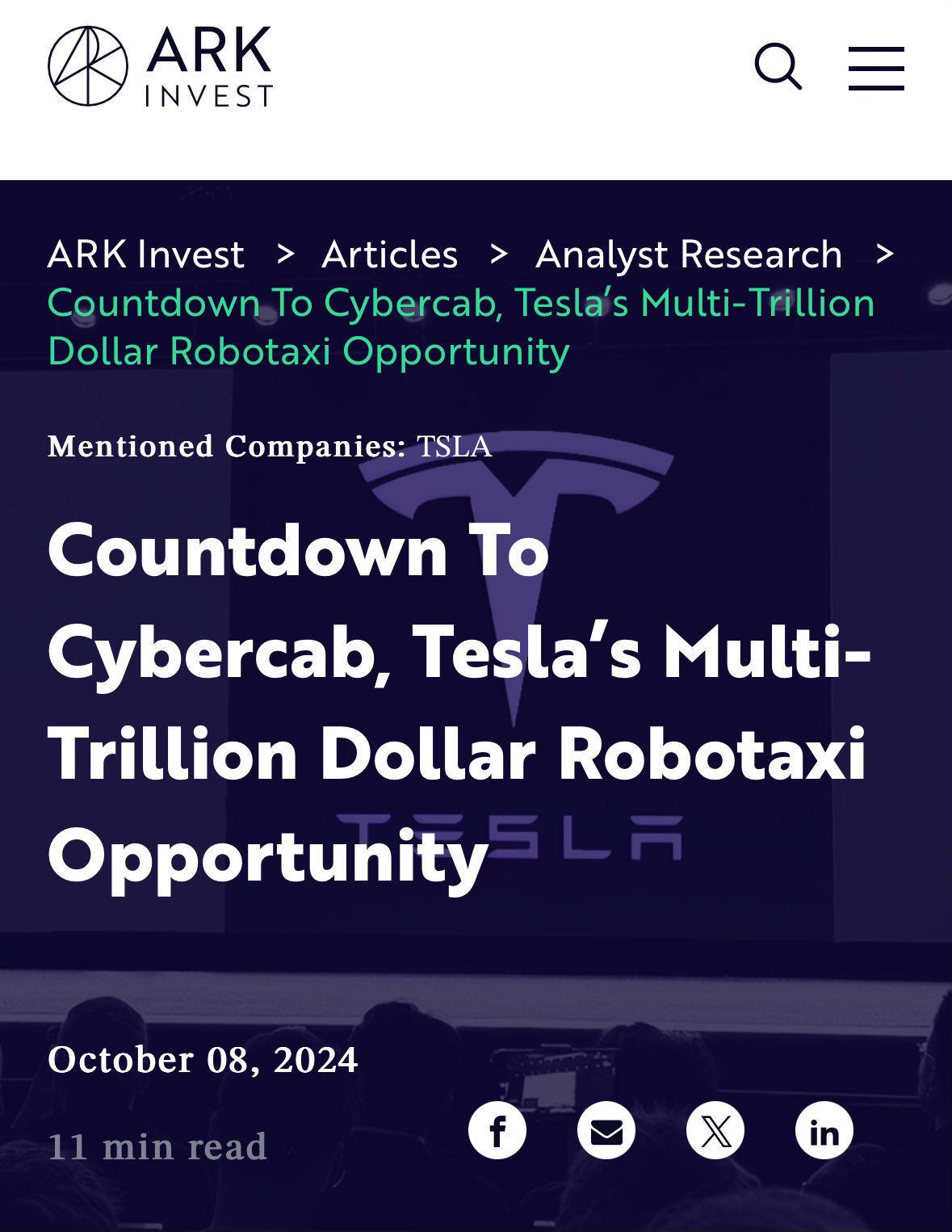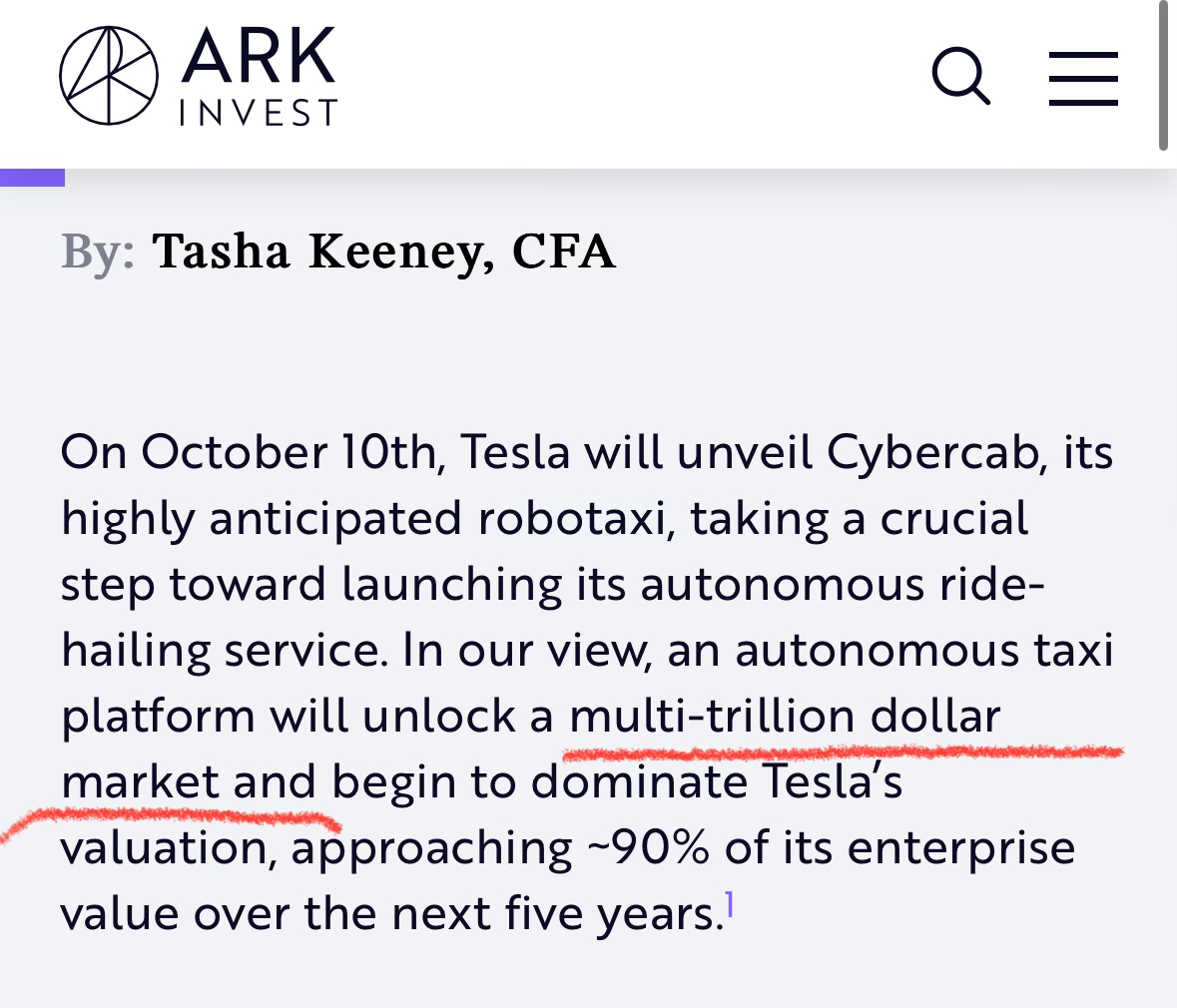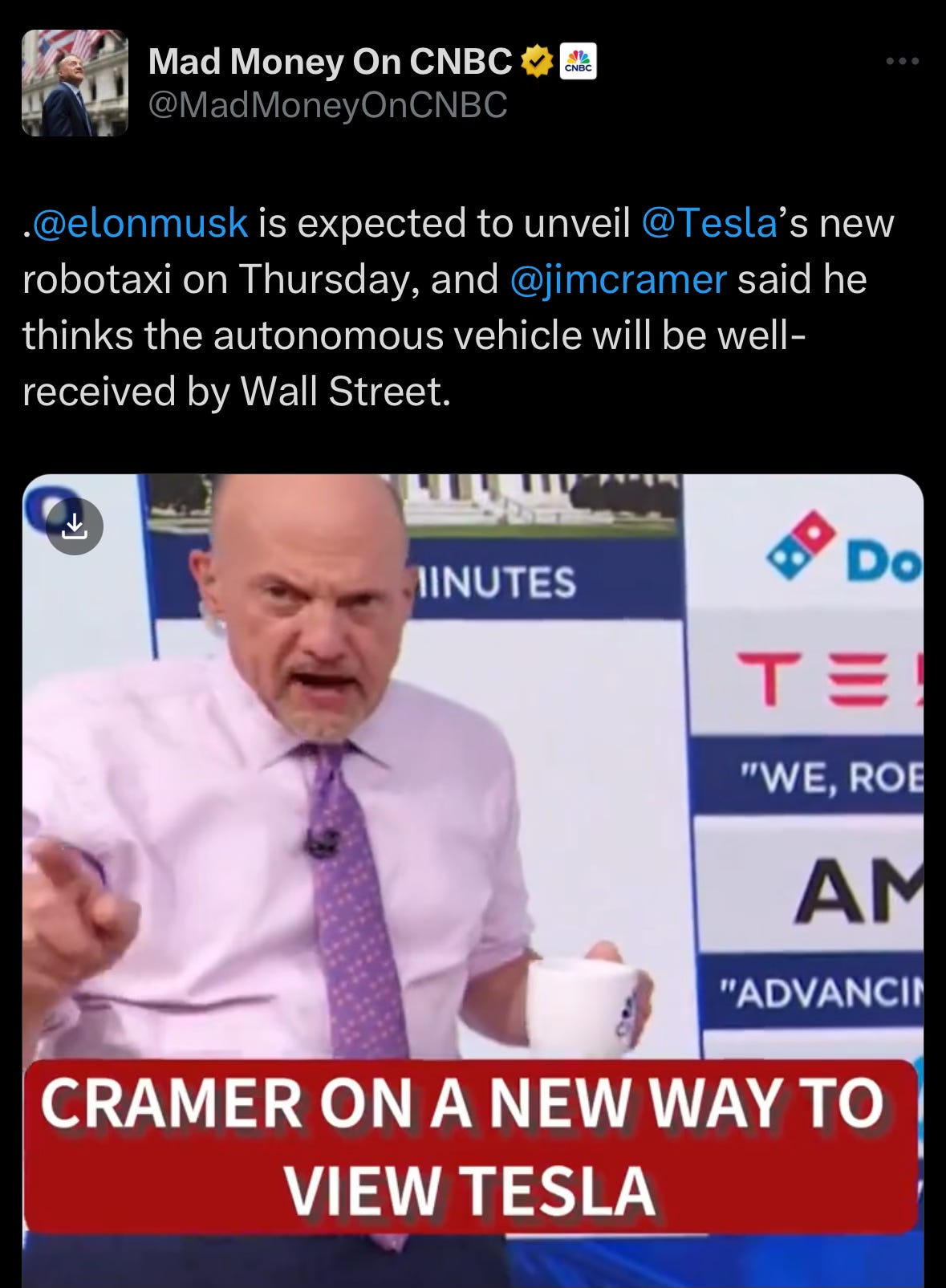Tesla Bear Executive Summary
Just over a week ago, Greg Crennan of Golden Coast Consultants outlined a compelling bear case for Tesla, asserting that at $250 per share and a market cap approaching $750 billion, the stock was highly overvalued ( Tesla bear Case Report 1 ). His detailed analysis pointed to Tesla’s plateauing demand, concerns around profitability, and the lack of near-term product catalysts. With Thursday’s highly anticipated Robo Taxi event now behind us, the situation appears even more uncertain, with little clarity on the short-term future of the company, since no real product won’t hit the streets till maybe 2026 (at best).
Robo Taxi: The Future, But Not Now
As anticipated by Crennan, Tesla’s event did little to assuage concerns regarding the company’s near-term growth. Elon Musk’s vision for a fully autonomous fleet is, in theory, exciting and innovative, but investors expecting actionable updates or timelines left the event disappointed. The Robo Taxi announcement revealed plans for production in 2026, with potential real-world deployments not anticipated until 2027. For a company trading at such a high valuation, this distant timeline presents a significant problem.
Tesla’s current price-to-earnings (PE) ratio of 62 and forward PE ratio of 78 suggest that investors are already pricing in massive future growth now and into 2025. Yet, as of today, after a -7% decline post-event, the stock is trading at $221 per share—a level that still reflects expectations of near-term success. The problem? There are no clear paths to justify such high prices in the short term.

The Bull Bubble Case Scenario
The most bullish analysts, like Cathie Wood, projected that Tesla’s autonomous vehicle business could add hundreds of billions of dollars to the company’s bottom line by 2025, with her suggesting a future revenue boost of $1 trillion from autonomous technologies by 2026. These estimates were part of the reason Tesla’s stock price was trading so high, as investors believed they were getting in early on a game-changing technology.
(Here is Cathie Woods ARK invest note to investors)
(Note: these types of false projections on extreme unrealistic expectations is what some on Wall Street would call is a classic Pump and Dump)
Even famous Jim Cramer on CNBC was pumping the stock ahead of teslas event, instead of warning investors about the downside risk.
The Steve Jobs Paradox: What Elon Could Learn
Elon Musk’s strategy of unveiling futuristic concepts far ahead of their actual production is vastly different from how Steve Jobs ran Apple. Jobs was a perfectionist, who refused to reveal products until they were market-ready, ensuring that each launch was a significant event that transformed the marketplace.
(Here is Steve Jobs talking about not shipping or releasing Junk)
By contrast, Musk is quick to introduce ambitious, far-off concepts—like the Robo Taxi—but often with little in the way of immediate revenue or product availability.
The market generally rewarded Apple with a conservative valuation under Jobs, as investors knew they were only getting information about products ready to generate revenue. Musk, on the other hand, has fueled speculative frenzy around Tesla by constantly pushing out visionary ideas that are years from production. While this strategy has excited fans and helped the stock grow rise from its $100 low in 2022, it is increasingly risky as the promised products continue to disappoint.
Tesla’s stock trades on the promise of the future, and this lack of immediate, tangible returns is a key reason for its inflated PE ratio. Investors are essentially buying into Musk’s promises rather than the company’s current financial performance. The problem is that when those promises get pushed further and further out, as they have with the Robo Taxi announcement, it becomes harder to justify the high valuation.
However, the Thursday event drastically altered that timeline. Now, Tesla’s autonomous vehicle production won’t even begin until 2026, with real-world deployment not expected until 2027. This creates a significant gap between investor expectations and reality. Tesla didn’t provide updates on essential developments, like its lower-cost model, which was supposed to be a near-term catalyst. Instead, investors were left holding the bag with vague promises and no clear roadmap for the next few years.
Keep reading with a 7-day free trial
Subscribe to The Coastal Journal to keep reading this post and get 7 days of free access to the full post archives.







